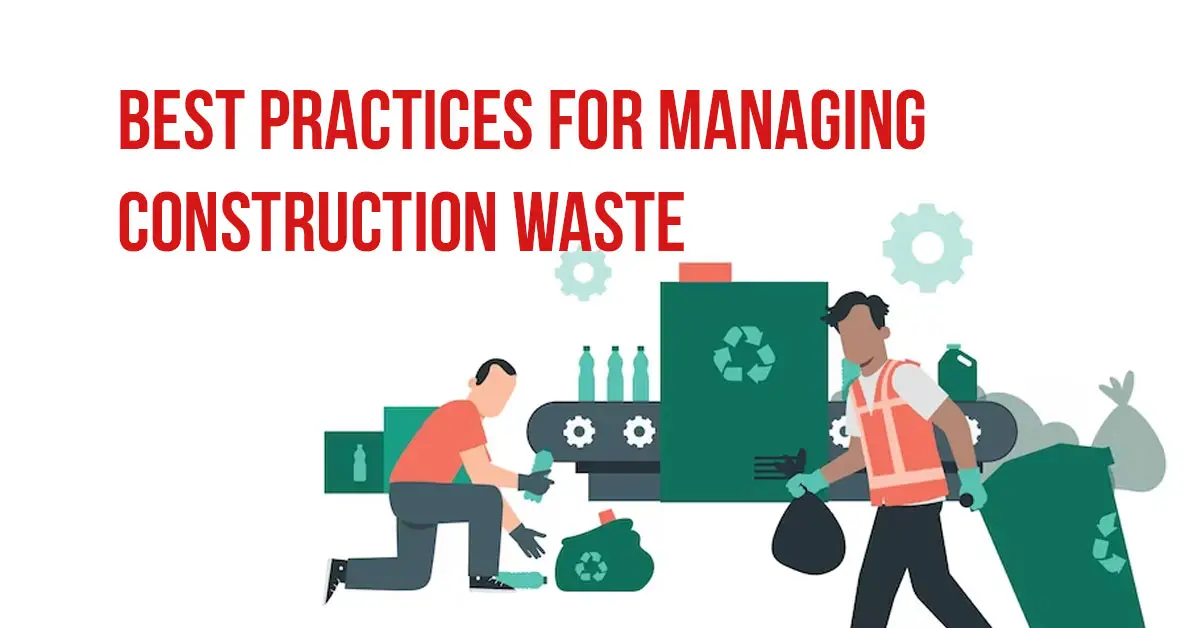Construction waste is a pressing issue in the industry, with significant implications for the environment and public health. To address this challenge, construction companies must adopt effective waste management strategies.
This article highlights the best practices for managing construction waste, ensuring environmental sustainability and responsible resource utilization. So, let’s delve into the realm of sustainable construction practices and pave the way for a greener future.
Understanding Construction Waste
Construction waste encompasses materials and debris generated during construction, renovation, or demolition activities. From bricks and wood to concrete and metals, the spectrum of construction waste is vast. In the United States alone, the construction industry churns out over 500 million tons of waste annually, highlighting the magnitude of the problem.
Negative Impacts of Construction Waste
Improper management of construction waste poses grave environmental and public health risks:
- Air and Water Pollution: Discarded materials contribute to air and water pollution.
- Soil Contamination: Hazardous substances from construction waste can contaminate soil.
- Greenhouse Gas Emissions: Manufacturing new materials to replace wasted ones leads to increased greenhouse gas emissions.
- Landfill Overload: Excessive waste burdens landfills, exacerbating disposal challenges.
- Aesthetic Concerns: Improper waste disposal practices mar the aesthetics of local communities.
Best Practices for Construction Waste Management
Reduce Waste Generation
Minimizing waste at the source is paramount. Through meticulous planning and design, construction companies can optimize material utilization and minimize excess.
- Strategic Planning: Accurate estimation and utilization of materials to mitigate waste.
- Sustainable Building Practices: Embrace modular construction and prioritize durable, reusable, or recyclable materials.
Reuse Materials
Salvaging and repurposing materials significantly reduce the demand for new resources and energy consumption associated with manufacturing.
- Resource Conservation: Salvage structural elements and decorative items for reuse.
- Collaboration: Partner with reuse centers to divert surplus materials from landfills.
Recycle Waste
Recycling discarded materials into new products conserves resources and diminishes environmental impact.
- Waste Segregation: Implement systematic waste segregation at construction sites.
- Partnerships: Collaborate with local recycling facilities to process collected materials.
Implementing a Waste Management Strategy
Conduct Regular Waste Audits
Periodic waste audits assess waste generation, identify improvement areas, and set targets for waste reduction.
Set SMART Goals
Establish Specific, Measurable, Achievable, Relevant, and Time-bound (SMART) goals to track progress effectively.
Educate the Workforce
Educate employees and subcontractors on proper waste segregation and recycling practices.
Establish Clear Waste Disposal Procedures
Ensure clear waste disposal procedures, including designated areas for segregation and regular waste collection.
Develop a Comprehensive Waste Management Plan
Craft a robust plan outlining processes for managing various waste types and addressing contingencies.
Conclusion
Effective construction waste management is indispensable for sustainable development. By implementing these best practices, construction companies can minimize waste generation, conserve resources, and foster environmental stewardship. Every effort towards responsible waste management contributes to a cleaner, healthier planet. Let’s unite in our commitment to building a more sustainable future.
Questions and Answers:
Q1: What is construction waste and why is it important to manage it effectively? A1: Construction waste comprises materials generated during construction, renovation, or demolition. Effective management is vital to mitigate environmental and health risks.
Q2: What are some negative impacts of improper construction waste management? A2: Improper management can lead to air and water pollution, soil contamination, increased greenhouse gas emissions, landfill overflow, and aesthetic degradation.
Q3: What are the best practices for managing construction waste? A3: Best practices include reducing waste generation through strategic planning, reusing materials, and recycling discarded materials into new products.
Q4: How can construction companies implement a waste management strategy? A4: They can conduct regular waste audits, set SMART goals, educate their workforce, establish clear waste disposal procedures, and develop comprehensive waste management plans.
Q5: Why is it essential to prioritize sustainable construction practices? A5: Sustainable practices not only minimize environmental impact but also contribute to cost savings, resource conservation, and a healthier planet for future generations.
Read Also:

